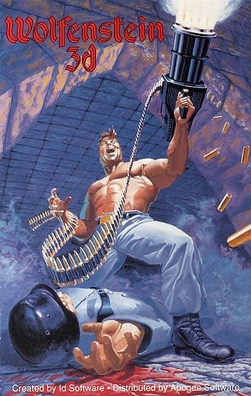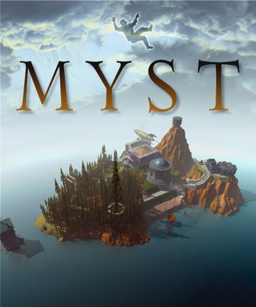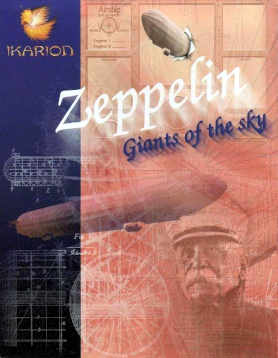
Amiga is a family of personal computers produced by Commodore from 1985 until the company's bankruptcy in 1994, with production by others afterward. The original model is one of a number of mid-1980s computers with 16-bit or 16/32-bit processors, 256 KB or more of RAM, mouse-based GUIs, and significantly improved graphics and audio compared to previous 8-bit systems. These include the Atari ST—released earlier the same year—as well as the Macintosh and Acorn Archimedes. The Amiga differs from its contemporaries through custom hardware to accelerate graphics and sound, including sprites, a blitter, and four channels of sample-based audio. It runs a pre-emptive multitasking operating system called AmigaOS.

Doom is a first-person shooter game developed and published by id Software. Released on December 10, 1993, for DOS, it is the first installment in the Doom franchise. The player assumes the role of a space marine, later unofficially referred to as Doomguy, fighting through hordes of undead humans and invading demons. The game begins on the moons of Mars and finishes in hell, with the player traversing each level to find its exit or defeat its final boss. It is an early example of 3D graphics in video games, and has enemies and objects as 2D images, a technique sometimes referred to as 2.5D graphics.

The Compact Disc-Interactive is a digital optical disc data storage format as well as a hardware platform, co-developed and marketed by Dutch company Philips and Japanese company Sony. It was created as an extension of CDDA and CD-ROM and specified in the Green Book specifications, co-developed by Philips and Sony, to combine audio, text and graphics. The two companies initially expected to impact the education/training, point of sale, and home entertainment industries, but the CD-i is largely remembered today for its video games.

Wolfenstein 3D is a first-person shooter video game developed by id Software and published by Apogee Software and FormGen. Originally released on May 5, 1992, for DOS, it was inspired by the 1981 Muse Software video game Castle Wolfenstein, and is the third installment in the Wolfenstein series. In Wolfenstein 3D, the player assumes the role of Allied spy William "B.J." Blazkowicz during World War II as he escapes from the Nazi German prison Castle Wolfenstein and carries out a series of crucial missions against the Nazis. The player traverses each of the game's levels to find an elevator to the next level or kill a final boss, fighting Nazi soldiers, dogs, and other enemies with a knife and a variety of guns.
A killer application is any software that is so necessary or desirable that it proves the core value of some larger technology, such as its host computer hardware, video game console, software platform, or operating system. Consumers would buy the host platform just to access that application, possibly substantially increasing sales of its host platform.

Star Control: Famous Battles of the Ur-Quan Conflict, Volume IV is an action-strategy video game developed by Toys for Bob and published by Accolade. It was originally released for MS-DOS and Amiga in 1990, followed by ports for the Sega Genesis and additional platforms in 1991. The story is set during an interstellar war between two space alien factions, with humanity joining the Alliance of Free Stars to defeat the invading Ur-Quan Hierarchy. Players can choose to play as either faction, each with seven different alien starships which are used during the game's combat and strategy sections.

Star Control II: The Ur-Quan Masters is a 1992 video game, the sequel to Star Control. It was developed by Toys for Bob and originally published by Accolade in 1992 for MS-DOS. The game includes exoplanet-abundant star systems, hyperspace travel, extraterrestrial life, and interstellar diplomacy. There are 25 alien races with which communication is possible.

Myst is an adventure video game designed by Rand and Robyn Miller. It was developed by Cyan, Inc., published by Broderbund, and first released in 1993 for the Macintosh. In the game, the player travels via a special book to a mysterious island called Myst. The player interacts with objects and traverses the environment by clicking on pre-rendered imagery. Solving puzzles allows the player to travel to other worlds ("Ages"), which reveal the backstory of the game's characters and help the player make the choice of whom to aid.

Roberta Lynn Williams is an American video game designer and writer, who co-founded Sierra On-Line with her husband, game developer Ken Williams. In 1980, her first game, Mystery House, became a modest commercial success; it is credited as the first graphic adventure game. She is also known for creating and maintaining the King's Quest series, as well as designing the full motion video game Phantasmagoria in 1995.

Speedrunning is the act of playing a video game, or section of a video game, with the goal of completing it as fast as possible. Speedrunning often involves following planned routes, which may incorporate sequence breaking and exploit glitches that allow sections to be skipped or completed more quickly than intended. Tool-assisted speedrunning (TAS) is a subcategory of speedrunning that uses emulation software or additional tools to create a precisely controlled sequence of inputs.
Robert Frederick Ford is an American video game programmer. He is the son of mathematician L. R. Ford Jr. A co-founder of the video game studio Toys for Bob, he led the company from its inception until late 2020 with his co-founder Paul Reiche III. Ford is the co-creator, with Reiche III, of the Star Control universe. Ford did the programming, while Reiche was responsible for the game design and fiction. Ford was also the lead programmer on The Horde and Pandemonium.

Super Street Fighter II: The New Challengers is a 1993 competitive fighting game produced by Capcom and originally released as an arcade game. It is the fourth game in the Street Fighter II sub-series of Street Fighter games, following Street Fighter II: Hyper Fighting (1992). It refines and balances the existing character roster from the previous versions, and introduces four new characters, including Cammy and Dee Jay. It is the first game on Capcom's CP System II hardware, with more sophisticated graphics and audio over the original CP System hardware used in previous versions of Street Fighter II.

Robert J. Mical is an American computer programmer and hardware designer who has primarily worked in video games. He is best known for creating the user interface, Intuition, for Commodore's Amiga personal computer (1985), contributing to the design of the Amiga hardware, and co-designing, with Dave Needle, the Atari Lynx color handheld (1989) and the 3DO Interactive Multiplayer (1993).

Synergistic Software was a video game developer based in Seattle. Founded in 1978, the company published some of the earliest available games and applications for the Apple II family of computers. They continued developing games for various platforms into the late 1990s.

Diablo is an action role-playing video game developed by Blizzard North and released by Blizzard Entertainment in January 1997, and is the first installment in the video game series of the same name.

Links 386 Pro is a golf simulation sports game for MS-DOS released in 1992. It is part of the Links series, and was developed by Access Software as the follow-up to Links: The Challenge of Golf (1990). A Macintosh version, Links Pro, was released in 1994. An enhanced version called Links 386 CD was released for PC in 1995 that included audio comments by comedian Bobcat Goldthwait acting as the player's caddie, and an aerial flyby of each hole streamed from the game's CD-ROM. Re-branded versions of the game were also released for Microsoft Windows under the titles Microsoft Golf 2.0 (1994) and Microsoft Golf 3.0 (1996), part of the Microsoft Golf series.

Star Wars Chess is a 1993 chess-playing video game developed by The Software Toolworks, based on the Star Wars film franchise and published by Mindscape for DOS, Sega CD and Windows 3.x. A 3DO Interactive Multiplayer version was planned but never released.

Zeppelin, also known as Zeppelin: Giants of the Sky, is a video game developed by German studio Ikarion and published by MicroProse for the Amiga and MS-DOS compatible operating systems in 1994.

The Analogue Pocket is a handheld game console designed and manufactured by Analogue. Announced in October 2019 and released on December 13, 2021, it uses field-programmable gate array (FPGA) chips to play games from various handheld consoles up to the sixth generation.

















